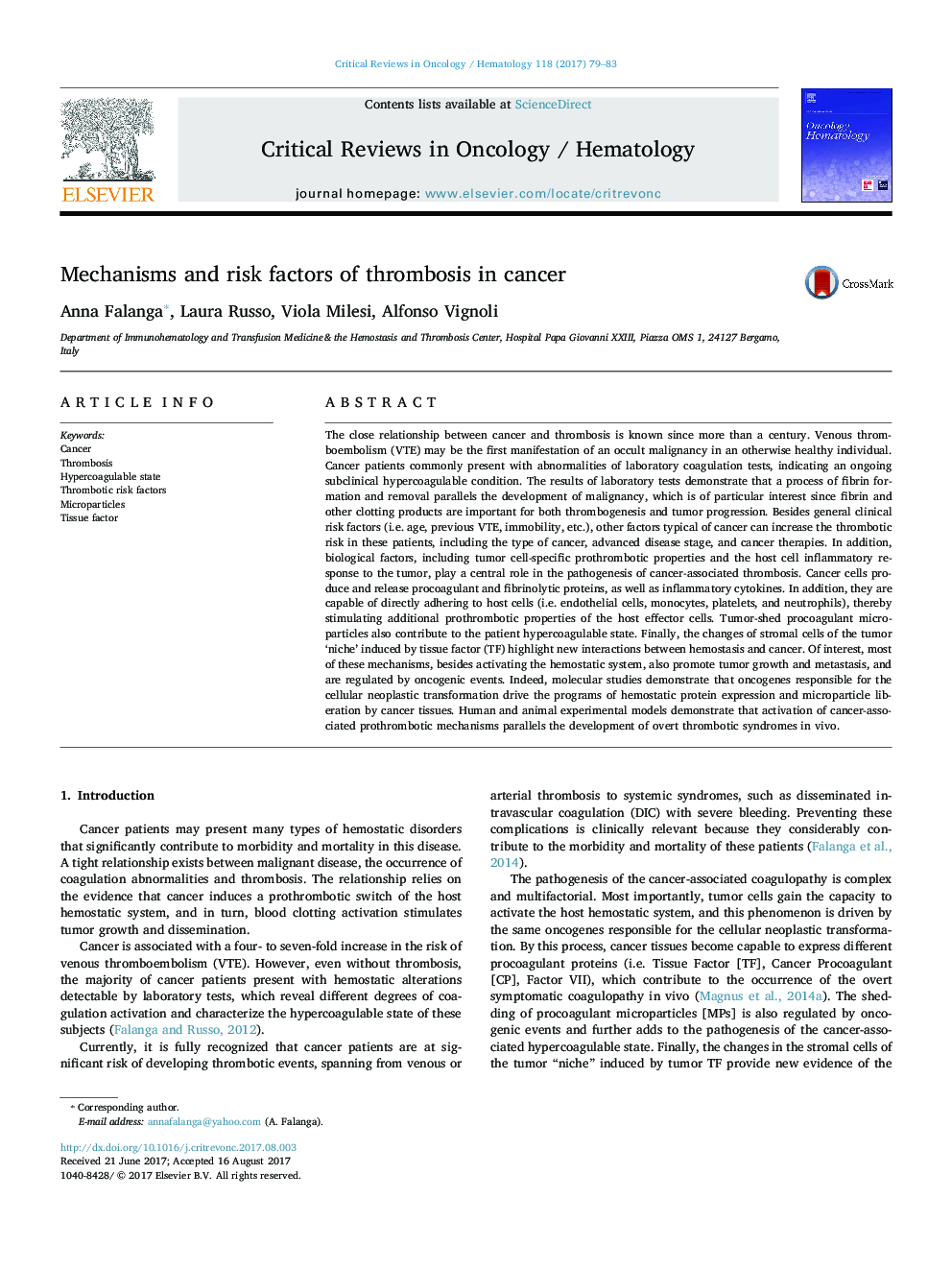| کد مقاله | کد نشریه | سال انتشار | مقاله انگلیسی | نسخه تمام متن |
|---|---|---|---|---|
| 5664047 | 1590699 | 2017 | 5 صفحه PDF | دانلود رایگان |
The close relationship between cancer and thrombosis is known since more than a century. Venous thromboembolism (VTE) may be the first manifestation of an occult malignancy in an otherwise healthy individual. Cancer patients commonly present with abnormalities of laboratory coagulation tests, indicating an ongoing subclinical hypercoagulable condition. The results of laboratory tests demonstrate that a process of fibrin formation and removal parallels the development of malignancy, which is of particular interest since fibrin and other clotting products are important for both thrombogenesis and tumor progression. Besides general clinical risk factors (i.e. age, previous VTE, immobility, etc.), other factors typical of cancer can increase the thrombotic risk in these patients, including the type of cancer, advanced disease stage, and cancer therapies. In addition, biological factors, including tumor cell-specific prothrombotic properties and the host cell inflammatory response to the tumor, play a central role in the pathogenesis of cancer-associated thrombosis. Cancer cells produce and release procoagulant and fibrinolytic proteins, as well as inflammatory cytokines. In addition, they are capable of directly adhering to host cells (i.e. endothelial cells, monocytes, platelets, and neutrophils), thereby stimulating additional prothrombotic properties of the host effector cells. Tumor-shed procoagulant microparticles also contribute to the patient hypercoagulable state. Finally, the changes of stromal cells of the tumor 'niche' induced by tissue factor (TF) highlight new interactions between hemostasis and cancer. Of interest, most of these mechanisms, besides activating the hemostatic system, also promote tumor growth and metastasis, and are regulated by oncogenic events. Indeed, molecular studies demonstrate that oncogenes responsible for the cellular neoplastic transformation drive the programs of hemostatic protein expression and microparticle liberation by cancer tissues. Human and animal experimental models demonstrate that activation of cancer-associated prothrombotic mechanisms parallels the development of overt thrombotic syndromes in vivo.
Journal: Critical Reviews in Oncology/Hematology - Volume 118, October 2017, Pages 79-83
